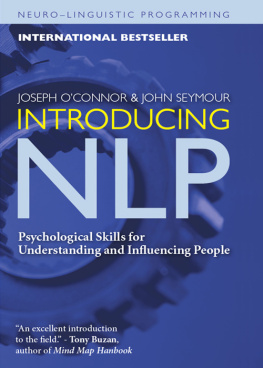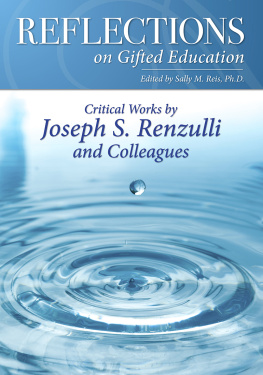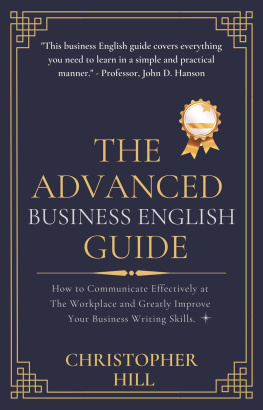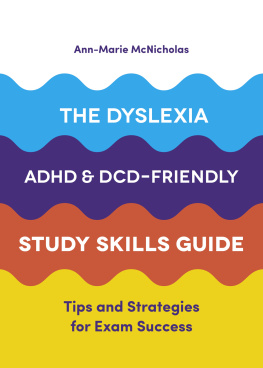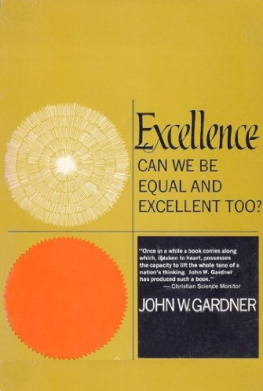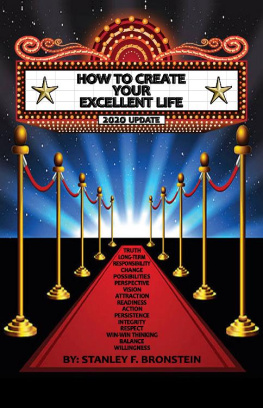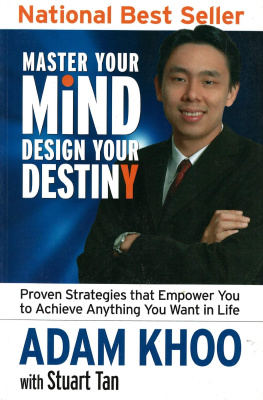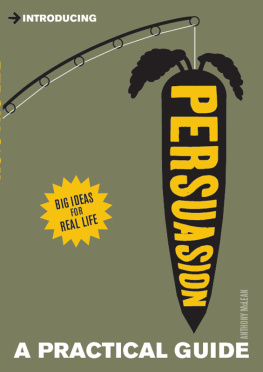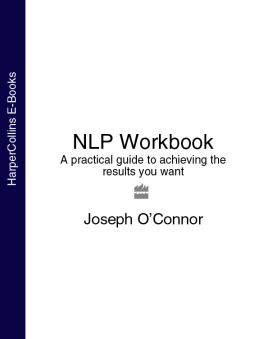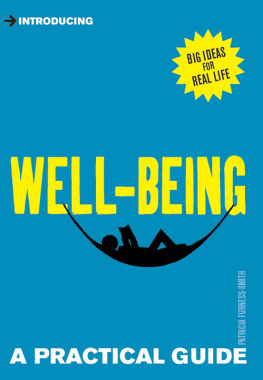Like the creative composer, some people are more gifted at living than others. They do have an effect on those around them, but the process stops there because there is no way of describing in technical terms just what it is they do, most of which is out of awareness. Some time in the future, a long, long time from now when culture is more completely explored, there will be an equivalent of musical scores that can be learned, each for a different type of man or woman in different types of jobs or relationships, for time, space, work, and play. We see people who are successful and happy today, who have jobs which are rewarding and productive. What are the sets, isolates, and patterns that differentiate their lives from those of the less fortunate? We need to have a means for making life a little less haphazard and more enjoyable.
Edward T. Hall
The Silent Language

To all pragmatic idealists and the spirit of curiosity
First U.S. edition published in 2011 by Conari Press,
an imprint of Red Wheel/Weiser, llc
With offices at:
650 Third Street, Suite 400
San Francisco, CA 94107
www.redwheelweiser.com
Published by arrangement with HarperCollins Publishers Ltd
Joseph O'Connor and John Seymour, 1990
First published by Mandala 1990
Revised edition by The Aquarian Press 1993
Additional revised edition by HarperElement 2002
The Authors assert the moral right to be identified as the Authors of this work.
All rights reserved. No part of this publication may be reproduced or transmitted in any form or by any means, electronic or mechanical, including photocopying, recording, or by any information storage and retrieval system, without permission in writing from Red Wheel/Weiser, llc. Reviewers may quote brief passages.
ISBN: 978-1-57324-498-5
Library of Congress Cataloging-in-Publication Data available upon request
Printed and bound in Great Britain by Clays Ltd, St Ives plc
Typeset by Palimpsest Book Production Limited, Falkirk, Stirlingshire
Cover photograph Shutterstock
10 9 8 7 6 5 4 3 2 1
www.redwheelweiser.com
www.redwheelweiser.com/newsletter
CONTENTS
Sets a context and maps out the main ideas of NLP: how we get from our present reality to where we want to go, outcomes, communication, how to gain rapport, and how we build our unique ways of understanding the world.
Deals with how we use our senses internally to think, how language relates to thought, and how you can tell the way in which other people are thinking.
Deals with our states of mind, how they are evoked, and how we can use these stimuli or anchors to gain access to our resourceful states of mind at will.
This is about thinking in terms of systems rather than simple cause and effect. It contains some of Robert Dilts' recent work, how environment, behavior, capability, beliefs and identity fit together.
Describes how language sets limits on our experience and how we can go beyond those limits. The Meta Model patterns are a way of asking key questions to clarify what people say.
How to use language in artfully vague ways that accord with other people's experience and allows them access to their unconscious resourcescalled the Milton Model after the world famous hypnotherapist, Milton Erickson. There is a section on metaphor, another on changing the meaning of experience, and a third on how we perceive time subjectively.
Explores more NLP patterns, including conflict, alignment, values and flexibility in the context of business. How to make meetings run more effectively and how to reach agreement in difficult situations.
Focuses on NLP in therapy and personal change, and describes three classic NLP techniques: the swish, the phobia cure, and internal conflict resolution.
This chapter is about our thinking strategies. There are some practical examples, including the famous NLP spelling strategy. There is a strategy for musical memory, and a creative strategy modelled on Walt Disney.
This is a brief, speculative exploration of how NLP reflects change in our culture; how the process of change in the internal world of our thoughts reflects the increasing rate of change in the external world.
REFERENCE SECTION
A source of practical information and advice on choosing NLP books and courses.
FOREWORD
It is always a pleasure to see dedicated and serious students of NLP put their talents to work. In this case, Joseph O'Connor and John Seymour have done an exquisite job in presenting fundamental NLP principles and tools in an easily accessible form. The book is written in an enjoyable conversational manner yet manages to preserve the richness and sophistication of the material it is portrayingthus satisfying Albert Einstein's famous dictum, Everything should be made as simple as possible, but not any simpler.
More importantly, this book provides an up-to-date introduction and overview of NLP, incorporating the latest developments in the field as well as reviewing the most important NLP basics. Congratulations to two people who are helping lay the groundwork for NLP in the next decade!
Robert B. Dilts
Santa Cruz, California
December 1989
PREFACE
Reasonable men adapt themselves to the world.
Unreasonable men adapt the world to themselves.
That's why all progress depends on unreasonable men.
George Bernard Shaw
History, when recorded, has much in common with the song of the purveyor of the latest miracle cure, the diplomat, and the apologist. How could it be otherwise?
The oral traditions of people in intact cultures before orthographies are introduced are both a comfort and a challenge to them: a comfort in their orderliness and the imperative flow of events; a challenge to the singers who bear witness to the chaos that ultimately must fit the meter and length of their chanted chronicle. No doubt, after a time, blessed amnesia steals upon them and they sing with utter conviction.
Gregory Bateson warns us of the lethal triangle of technology, the propensity of our species to replace natural living physical context (the forests of the Amazon Basin) with artificial context (the streets of New York), and conscious planning without the balance of unconscious process. Tom Malloy (in his brilliant novel The Curtain of Dawn) corrects the speech impediment of Charles Darwin who said survival of the fittest where he would have spoken less falsely to have said survival of the fitters.
These two men, O'Connor and Seymour, have set out to make a coherent story out of an outrageous adventure. The jungles through which Richard Bandler and I wandered in our explorations are bizarre and wondrous. These fine and well-intentioned men will show you glimpses of an English rose garden, trimmed and proper. Both the jungle and the rose garden carry their own special attractions.
What you are about to read never happened, but it seems reasonable, even to me.
John Grinder
December 1989
INTRODUCTION
This book is an introduction and guide to the field known as Neuro-Linguistic Programming, or NLP. NLP is the art and science of excellence, derived from studying how top people in different fields obtain their outstanding results. These communication skills can be learned by anyone to improve their effectiveness both personally and professionally.
This book describes many of the models of excellence that NLP has built in the fields of communication, business, education, and therapy. The approach is practical, it gets results, and it is increasingly influential in many disciplines all over the world.
Next page
